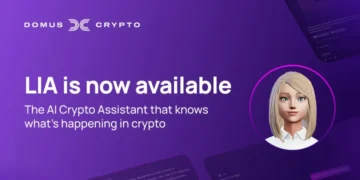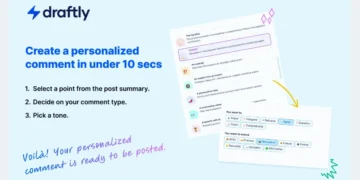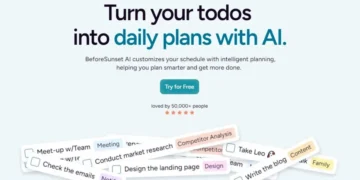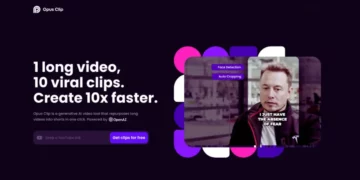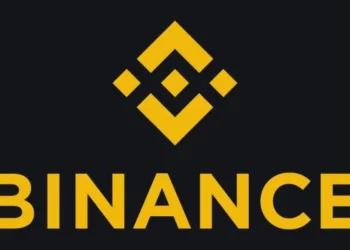In an era where artificial intelligence (AI) is rapidly transforming industries and everyday life, ensuring its safe and secure development has become paramount. Enter the Coalition for Secure AI (CoSAI), a groundbreaking initiative formed by tech giants such as Google, Microsoft, and OpenAI. CoSAI aims to tackle the most pressing challenges in AI security, focusing on protecting AI models and the software supply chain from malicious threats.
With the recent launch of Hugging Face’s SmolLM, a compact and efficient AI model, CoSAI’s mission gains even more relevance. This article delves into the goals, initiatives, and significance of CoSAI in safeguarding the future of AI technology.
Top AI News of the Week
Google, OpenAI, Microsoft, and More: The New Coalition for Secure AI
Just a few days ago, Google announced the formation of the Coalition for Secure AI (CoSAI) at the Aspen Security Forum. This initiative brings together tech giants like Microsoft, OpenAI, Amazon, Intel, and many others. The goal is simple: to address the security risks posed by artificial intelligence (AI). While this sounds great, what does it really mean?
The Need for a Secure AI Coalition
It seems like just yesterday that OpenAI launched ChatGPT, sparking an AI arms race among tech giants like Google, Microsoft, Apple, and Meta. However, the rapid pace of development brings significant concerns. Last year, several public figures and AI experts called for a pause in the development of large-scale AI systems due to “profound risks to society and humanity.” Although the letter had little impact, the need for robust measures became clear.
Recognizing this need, Google introduced the Secure AI Framework (SAIF) last year and has now taken a step further by bringing together industry heavyweights to form CoSAI.
What CoSAI Plans to Do
In a blog post, Google outlined the initial plans for the coalition. Let’s break it down:
- Software Supply Chain Security for AI Systems This may sound technical, but it essentially means ensuring AI code is built with secure and reliable software. Think of it as making sure the ingredients in a recipe are of the highest quality to prevent the final dish from turning out poorly. The goal here is to track how AI software is built and catch problems early on.
- Defense Framework Another aim of CoSAI is to create a “defense framework” to identify and combat security threats in AI as they arise. This translates into tools and techniques to proactively address security risks, much like having a team of firefighters ready to extinguish any blaze.
- Rulebook Finally, CoSAI wants to develop a rulebook defining how AI should be developed safely. This book will include checklists and scorecards to guide developers in assessing the readiness of their AI systems.
Is It Redundant?
While CoSAI’s initiative is admirable, some believe it might be redundant. Other organizations like the Frontier Model Forum and the Partnership on AI already work in similar areas. However, the significant difference is that CoSAI includes all the major market players. This could be an advantage, as there will be no shortage of resources to execute their plans. But it also raises questions about potential biases, as the coalition might favor the interests of its members.
Personal Reflections
In my opinion, this coalition is a necessary step. The speed at which AI technology is developing is impressive but also terrifying. It’s not hard to imagine a scenario where a mistake in an AI system could have disastrous consequences. Can you imagine a self-driving car making a wrong decision in a split second? That’s why we need robust security measures.
Matformer: the new era of Artificial Intelligence in Mobile Devices
Have you ever imagined having a personalized AI assistant on your phone that understands your needs and responds instantly without draining all your mobile data or battery? Well, it seems Google has taken a significant step toward that future with the launch of MatFormer, a framework promising to revolutionize artificial intelligence on devices.
During the Google I/O Connect event in Bengaluru, Ambarish Kenghe, Vice President of Google Pay, surprised us with exciting news. Imagine being able to mix and match AI models on your device to find the perfect balance between performance and resource consumption. That’s exactly what MatFormer offers.
Think of it this way: you have multiple apps open on your phone, from the weather to an active chat. With MatFormer, each task would use an ideal AI model for its complexity, optimizing usage without sacrificing speed or accuracy. “This will translate into smoother, faster, and more precise AI experiences directly on users’ phones,” Kenghe commented.
Innovation Made in India
What makes MatFormer even more special is its origin. Developed by the DeepMind team in India, this framework not only showcases the talent and innovation in the country but also highlights the importance of global collaboration. At wwwhatsnew.com, we are always aware of how technology developed in one corner of the world can affect our daily lives.
Privacy and Efficiency: Key Priorities
One of the most impressive aspects of MatFormer is its focus on privacy and efficiency. Gemma Nano, the base model integrated into Android, was already designed with these priorities in mind. Now, with MatFormer, developers can take this to a whole new level, creating models that work optimally for specific use cases, even on unstable networks.
What Does This Mean for You?
Imagine you are in a place with poor internet signal. Normally, your phone might struggle to load data or run heavy applications. With MatFormer, your device can handle these tasks more efficiently, using AI models that require less power and data.
What do you think about the potential of having more integrated and efficient AI experiences on your phone? I believe we are on the cusp of a significant transformation in how we interact with our mobile devices. AI is no longer just a tool for large corporations but is becoming an integral part of our daily lives, accessible and personalized thanks to innovations like MatFormer.
Hugging Face and SmolLM: Bringing Powerful AI to Your Pocket
Imagine having powerful artificial intelligence directly on your phone without relying on the cloud. That’s precisely what Hugging Face has achieved with its new family of compact models, SmolLM. These models outperform offerings from giants like Microsoft, Meta, and Alibaba in terms of performance without sacrificing privacy or efficiency.
- Small but Mighty Hugging Face has introduced three versions of SmolLM, with 135 million, 360 million, and 1.7 billion parameters. Despite their smaller size compared to larger models, their performance is impressive. For instance, the smallest model, SmolLM-135M, outperforms Meta’s MobileLM-125M, even though it was trained with fewer data!
- The Importance of Data Quality The success of SmolLM lies in the quality of its training data. Hugging Face has created the Cosmo-Corpus, which includes synthetic texts and carefully curated educational content. This demonstrates that it’s not just about the quantity of data, but its quality. “Data quality is crucial,” says Ben Allal. “We use innovative approaches to curate high-quality data, mixing web and synthetic data to create the best small models available.”
- Democratizing AI One of the most exciting aspects of SmolLM is its impact on accessibility and privacy. By being able to run these models on personal devices like phones and laptops, it eliminates the need for cloud computing, reducing costs and privacy concerns. Imagine having advanced autocomplete features or interpreting complex requests directly on your device without relying on external servers.
Hugging Face’s SmolLM models bring powerful AI to your phone, no cloud required
Hugging Face today unveiled SmolLM, a new family of compact language models that surpass similar offerings from Microsoft, Meta, and Alibaba’s Qwen in performance. These models bring advanced AI… pic.twitter.com/KlqxOXviHq
— EchoeWeb (@Echoeweb) July 16, 2024
Discover Spark: Bringing AI to Your Email
Have you ever felt that your inbox is chaotic and managing your emails is overwhelming? If the answer is yes, you’re not alone. Information overload is a real problem today, and finding an effective solution can be challenging. This is where Spark comes in, promising to change the way you manage your email.
- What is Spark? Spark is an email application designed to help you filter out the noise and focus on what’s important. Available on multiple platforms like Windows, Android, Mac, iPhone, iPad, and Apple Watch, Spark stands out as one of the best options for those seeking more efficient email management.
- Prioritize and Organize Your Emails One of Spark’s standout features is its ability to prioritize and organize your emails. How often have you missed an important email because it was buried under a mountain of irrelevant messages? Spark solves this problem with features like “Prioritize” and “Pin,” allowing you to highlight the most important contacts and messages. Additionally, with the “Group by Sender” option, emails from your preferred senders are always within reach.
- Tools to Boost Productivity Spark not only helps you prioritize but also offers tools to manage your time more effectively. Features like “Mark as Done” and “Snooze” allow you to keep your inbox clean and organized. Do you have an email you need to respond to later? Use the “Send Later” feature and schedule the send when it suits you.
- Fostering Focus Spark is designed to foster focus. With the “Home Screen” and “Smart Inbox,” you can quickly manage and filter out the noise. Automated inboxes for newsletters and notifications ensure you only see what you really need to see.
OpenAI Launches GPT-4o Mini, Replacing GPT-3.5 in ChatGPT
On Thursday, OpenAI announced the launch of GPT-4o mini, a smaller and more affordable version of its GPT-4o language model. This new model will replace GPT-3.5 Turbo in ChatGPT and be available from today for free users and those with ChatGPT Plus or Team subscriptions. For ChatGPT Enterprise users, it will arrive next week.
- What is GPT-4o Mini? GPT-4o mini is a scaled-down version of the GPT-4o AI model. Like its larger counterpart, it is multimodal, meaning it can interpret both images and text. Additionally, it can use DALL-E 3 to generate images, greatly expanding its capabilities.
- The Importance of Smaller Language Models It’s not the first time a company has launched a smaller version of an existing language model. It’s a common practice in the AI industry. Companies like Meta, Google, and Anthropic have also followed this path. Smaller models are designed to perform simpler tasks at a lower cost, like making lists, summarizing, or suggesting words, rather than deep analysis.
- Advantages and Limitations Despite having fewer parameters, models like GPT-4o mini can be extremely effective if well-trained. The quality of training data, model architecture efficiency, and the training process itself impact their performance. A good example is Microsoft’s Phi-3, a small but very capable model.
- Implications for ChatGPT Users For ChatGPT users, the arrival of GPT-4o mini promises several advantages. On one hand, its free usage represents significant savings. Additionally, its multimodal capability opens new possibilities for content creation and interaction with AI.
We’re continuing to make advanced AI accessible to all with the launch of GPT-4o mini, now available in the API and rolling out in ChatGPT today. https://t.co/sTxtOfUapJ
— OpenAI (@OpenAI) July 18, 2024
Total Control Over ChatGPT Enterprise: OpenAI’s New Feature
Imagine having complete control over all interactions your company has with ChatGPT Enterprise. That’s precisely what OpenAI has achieved with its recent update, adding new tools to better manage data security and regulatory compliance.
- The New Enterprise Compliance API OpenAI has launched the Enterprise Compliance API, a tool that allows companies to keep detailed records of interactions with ChatGPT. Imagine this: every conversation, uploaded file, metadata, ChatGPT memory, and workspace users are logged with timestamps. This audit capability is crucial for highly regulated sectors where compliance with regulations like GDPR, HIPAA, and FINRA is a necessity.
- User Management Simplified For large companies with many users, access management can be a headache. OpenAI has addressed this by implementing a system known as SCIM (System for Cross-domain Identity Management). This means you can quickly and easily synchronize user access information and update who has permission to use the platform.
- Extended Admin Controls Administrators now have more control over custom GPTs and specific chatbots their employees can create. You can define which services GPTs can connect to with an approved domain list.
Genkit for Go: Creating Scalable AI Apps in Go
Google recently announced Genkit for Go, an open-source framework designed to build AI-powered applications and cloud services directly in Go. This framework combines Go’s performance and concurrency advantages with Genkit’s tools and libraries, allowing developers to create generative AI applications that leverage both technologies’ full potential.
- Tools for Intuitive AI Generation Genkit provides lightweight and composable abstractions that simplify the development of sophisticated AI workflows without sacrificing customization and control.
- Enhanced Prompt Engineering and Management Creating effective prompts is essential to achieving the desired results in generative AI. Genkit’s tools make this process simple and intuitive, allowing developers to focus on crafting the best prompts and producing high-quality results.
- Leveraging Go’s Performance By using Go, known for its performance and concurrency, Genkit allows developers to build highly efficient and scalable applications. The framework provides extensive support for natural language processing, image generation, and more, ensuring developers have everything they need to bring their ideas to life.
- Broad Support for GenAI Models Genkit supports models from Google’s Vertex AI, OpenAI, Anthropic, Hugging Face, and even custom models. Developers can choose the models that best suit their needs, without limitations.
Conclusion
This week has been packed with exciting AI news, from the formation of CoSAI to new tools and features aimed at enhancing AI security, accessibility, and efficiency. As AI continues to evolve, these advancements will undoubtedly play a crucial role in shaping the future of technology.
FAQs
1. What is the Coalition for Secure AI (CoSAI)?
The Coalition for Secure AI (CoSAI) is a new initiative formed by tech giants like Google, Microsoft, OpenAI, and others to address the security risks posed by artificial intelligence. It aims to create a secure framework for AI development, including software supply chain security, a defense framework, and a rulebook for safe AI practices.
2. Why was CoSAI formed?
CoSAI was formed in response to the rapid development of AI technologies and the associated security risks. The coalition aims to address these risks by bringing together major players in the tech industry to ensure AI systems are developed and deployed securely.
3. What are the main objectives of CoSAI? CoSAI has three main objectives:
- Ensuring software supply chain security for AI systems.
- Developing a defense framework to identify and combat security threats.
- Creating a rulebook to guide safe AI development practices.
4. How does Hugging Face’s SmolLM benefit users?
Hugging Face’s SmolLM models are designed to run efficiently on personal devices, providing powerful AI capabilities without relying on cloud services. This approach enhances privacy, reduces costs, and makes advanced AI more accessible.
5. What is Spark and how does it help with email management?
Spark is an email application that helps users prioritize and organize their emails. It offers features like prioritizing important contacts, pinning messages, grouping emails by sender, and tools to boost productivity, such as “Mark as Done,” “Snooze,” and “Send Later.”
6. What is GPT-4o mini and how does it compare to GPT-3.5 Turbo?
GPT-4o mini is a smaller, more affordable version of the GPT-4o language model. It replaces GPT-3.5 Turbo in ChatGPT, offering multimodal capabilities (text and image interpretation) and DALL-E 3 for image generation. Despite its smaller size, it maintains high performance for various tasks.
7. What new features has OpenAI introduced for ChatGPT Enterprise?
OpenAI has introduced the Enterprise Compliance API, allowing companies to keep detailed records of interactions with ChatGPT. They have also implemented SCIM for user management and extended admin controls for custom GPTs and chatbots.
8. What is Genkit for Go and what are its benefits?
Genkit for Go is an open-source framework for building AI-powered applications in the Go programming language. It offers tools for intuitive AI generation, enhanced prompt engineering, and support for various GenAI models, leveraging Go’s performance and concurrency for scalable applications.
Disclaimer: Some of the links on this page could be affiliate links, where I earn a commission if you make a purchase via my link.
Follow us on our social networks and keep up with everything that happens in the Metaverse!
Recent Posts
- Binance Blockchain Week 2025 returns to Dubai
- How to mine Bitcoin for Free on your Phone in 2025
- Coinstore hits 10 Million Users Milestone, Join Grand Celebration with $100,000 + Prize Pool
- Domus Crypto Launches LIA, an AI-Driven Assistant for Personalized Portfolio Management
- BitGo Launches Institutional Support for sBTC, Expanding Bitcoin DeFi Accessibility
